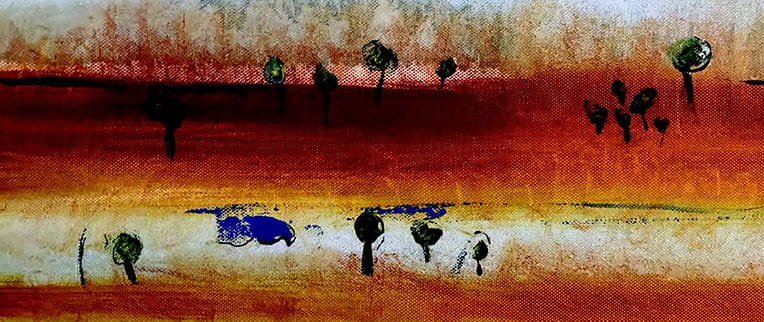Waterholes are often the only source of water in what is an otherwise arid environment.
— Marita Pearson, HDR Candidate, School of Environmental and Rural Science
Waterholes are an important biophysical feature of dryland river systems. They are often the only source of water in what is an otherwise arid environment and as such they provide critical refugial habitat for aquatic communities during the extended periods of low flow or no flow that commonly occur in these systems. When flows recommence, surviving biota from the waterholes form the basis of population recovery throughout the broader river system. From a socio-economic perspective, waterholes are an important water supply for local communities for stock and domestic use, recreation and cultural heritage. Marita Pearson, a UNE PhD student, has been investigating changes to the physical character of waterholes on the Barwon- Darling River, a dryland river, in western New South Wales.
Despite the importance of waterholes, there is growing body of evidence to suggest that these critical features are being threatened by increasing levels of sedimentation. As a result, waterholes are experiencing a substantial change in their physical form, chemical processes and ecological health. In the long term, sedimentation can affect the capacity of waterholes to act as a refuge to aquatic biota and reduces the reliability of the water supply for communities.
Marita has used historical longitudinal profiles from the late 1800s and compared these with a contemporary profile derived from high-definition, side-scanning sonar. Comparisons revealed a dramatic change in the physical character of waterholes over a 120-year period with waterhole depths and distance between deep waterholes (>4m) being altered significantly. The magnitude and trajectory of change was, however, scale dependent with the greatest observable change attributed to the presence or absence of low-level weirs.
Localised impoundment created deeper waterholes (>4m) in areas immediately upstream of the weir structures, and they were closer together. In contrast, and of concern, is that, for waterholes located outside of the weir pool’s influence, the maximum waterhole depths declined by 1.6m and the distance between deep waterholes more than doubled in several locations. The consequence for these non-weir pool locations is a significant reduction in waterhole connectivity.
The decline in depth is hypothesised to be due to sediment accumulation associated with anthropogenic increases in sediment flux and a decline in the rivers’ capacity to entrain and transport sediment throughout the system. Marita’s research will go on to investigate the contribution of sediment to the river via alluvial gullies on the Barwon-Darling floodplain and examine their potential impact on waterhole morphology. Changes to the flow regime as a consequence of water resource development will be examined as a potential causal factor behind sediment retention within the Barwon-Darling waterholes. These changes, combined with the effects of climate change, have the potential to reduce the persistence and quality of waterholes on the Barwon-Darling Rivers and could create a more fragmented landscape of aquatic refugia within the river system.
This study has been made possible through contributions from the Australian Cotton Research and Development Corporation and the Western Local Land Services.



